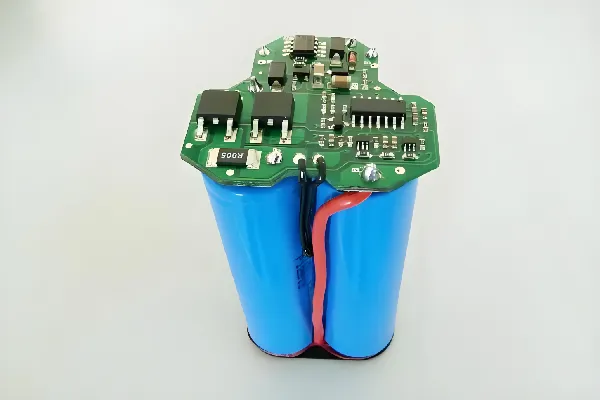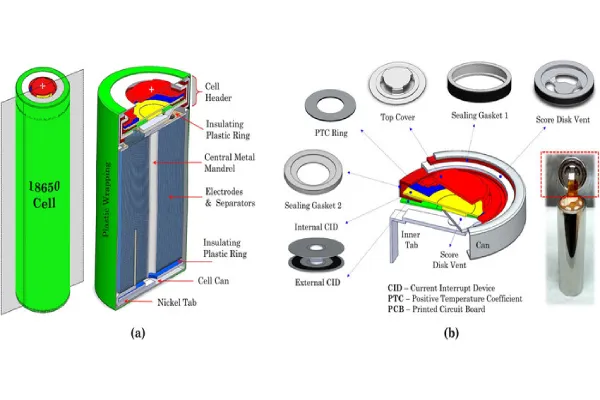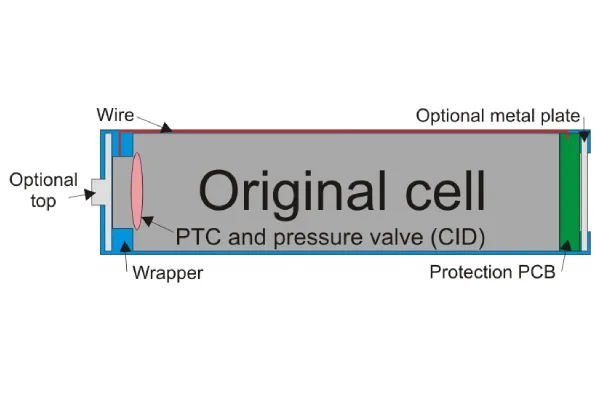Have you ever wondered what powers devices like laptops, flashlights, and even electric vehicles? Often, it’s the 18650 battery. But did you know there’s a safer version called the protected 18650 battery? In this article, we’ll dive deep into what makes these batteries special, why they’re important, and how to choose the best one for your needs.
Part 1. What is a protected 18650 battery?
A protected 18650 battery is a type of lithium-ion battery with an added safety layer. This safety feature, a protection circuit board (PCB), is designed to prevent common issues such as overcharging, over-discharging, and short-circuiting. These batteries are widely used in high-drain devices like flashlights, laptops, and electric vehicles because they offer high capacity and enhanced safety.
Why Protection is Necessary
Lithium-ion batteries are known for their high energy density, which makes them incredibly powerful and efficient. However, this also means they can be prone to safety issues if not managed properly.
Overcharging can lead to overheating and potentially cause a fire or explosion. Over-discharging can damage the battery, reducing its lifespan. Short circuits can cause immediate failures.
The PCB in a protected 18650 battery mitigates these risks, ensuring the battery operates within safe parameters.
Part 2. 18650 Protection circuit board
The protection circuit board (PCB) is a small but crucial component attached to the battery. It’s like a safety net that ensures the battery operates safely.
Here’s what it consists of:
- Overcharge Protection: This feature stops the battery from charging once it reaches a specific voltage, usually around 4.2V. This prevents overheating and potential damage.
- Over-discharge Protection: This feature ensures the battery doesn’t discharge below a certain voltage, typically around 2.5V. Over-discharging can cause irreversible damage to the battery.
- Short-circuit Protection: This feature cuts off the power in case of a short circuit, preventing immediate failures and potential hazards.
The PCB works by continuously monitoring the battery’s voltage and current. If it detects any unsafe conditions, it intervenes to prevent damage and ensure safety.
Part 3. Protected 18650 battery vs. unprotected
Comparison Table
| Feature | Protected 18650 Battery | Unprotected 18650 Battery |
|---|---|---|
| Safety | High | Moderate |
| Overcharge Protection | Yes | No |
| Over-discharge Protection | Yes | No |
| Short-circuit Protection | Yes | No |
| Longevity | Longer | Shorter |
| Cost | Higher | Lower |
| Size | Slightly Larger | Standard |
| Weight | Heavier | Lighter |
| Ideal for Beginners | Yes | No |
| Common Applications | Flashlights, Electronics DIY Projects | – |
Including protection in a battery is essential for several reasons.
- Safety: Protected batteries are designed to be much safer due to the built-in PCB. This makes them a better choice for high-drain devices and applications where safety is a priority.
- Overcharge and Over-discharge Protection: These features are crucial for maintaining the battery’s health and longevity. Overcharging can cause overheating while over-discharging can damage the battery permanently.
- Short-circuit Protection: This feature is especially important in preventing immediate failures and potential hazards.
- Longevity: Because protected batteries prevent overcharging and over-discharging, they tend to last longer than unprotected batteries.
- Cost: The added safety features make protected batteries more expensive, but the investment is worthwhile for the added safety and longevity.
- Size and Weight: The PCB adds a bit of extra length and weight to the battery. While this might be a drawback in some applications, the safety benefits usually outweigh this minor inconvenience.
- Ideal for Beginners: Due to their safety features, protected batteries are a great choice for beginners who might not be familiar with the intricacies of battery management.
- Common Applications: Protected batteries, such as flashlights and electronics, are commonly used in devices where safety is crucial. Unprotected batteries are more suited for DIY projects and applications where users can manually monitor and manage
- the battery’s safety.
Part 4. Protected 18650 battery size
It’s always a good idea to check your device’s specifications to ensure compatibility.
Adding a protection circuit board (PCB) slightly increases the size of the 18650 battery. A standard unprotected 18650 battery typically measures 18.6mm in diameter and 65mm in length.
The length usually increases to about 68mm when a PCB is added. This extra length ensures the PCB fits snugly while allowing the battery to fit into most devices designed for 18650 batteries.
Part 5. Protected 18650 battery price
Protected 18650 batteries are more expensive due to the additional safety features.
The added cost of a protected battery is primarily due to the inclusion of the PCB, which adds value by ensuring safety and longevity. While the initial investment is higher, the benefits of longer battery life and enhanced safety often make it worthwhile.
Part 6. What is the 18650 protected button top battery?
A button top battery has a raised positive terminal, which makes it compatible with many devices that require this type of connection. Protected button top 18650 batteries combine this connectivity feature with the safety of a PCB. This makes them an excellent choice for flashlights, portable devices, and other electronics that need a secure and reliable power source.
Why Choose a Button Top?
- Compatibility: Fits devices requiring button top batteries.
- Safety: Offers the same protection features as flat top protected batteries.
- Versatility: Suitable for various applications, from flashlights to portable devices.
Part 7. How to tell if a battery is protected?
Identifying a protected battery can be straightforward if you know what to look for.
Here are several methods to help you determine if a battery is protected:
- Label: Check the battery label for the word “protected.”
- Length: Protected batteries are usually longer (about 68mm) due to the added PCB.
- Weight: They are slightly heavier because of the extra circuitry.
- Positive Terminal: Look for a visible PCB at the positive terminal end.
- Manufacturer’s Information: Verify the battery specs on the manufacturer’s website or product listing.
- Visual Inspection: Some protected batteries have a small metal cap at the positive end, covering the PCB.
By using these methods, you can confidently identify whether a battery is protected, ensuring you choose the right one for your needs.
Part 8. Best protected 18650 battery
When choosing a protected 18650 battery, selecting a reputable brand is crucial. Here are some of the most reliable brands known for their high-quality, protected 18650 batteries:
- Panasonic
- Samsung
- LG
- CATL
- Ufine
- Sanyo
- Sony
- Orbtronic
- Lishen
- Olight
Part 9. Conclusion
Protected 18650 batteries are a fantastic choice for anyone needing a safe and reliable power source for their devices. With the added protection circuit board, these batteries prevent common issues like overcharging, over-discharging, and short-circuiting. Although they are slightly more expensive and larger than unprotected batteries, the benefits of safety and longevity make them a worthwhile investment.
Next time you’re in the market for a battery, consider opting for a protected 18650 to ensure you get the most out of your device safely and efficiently. Whether you’re powering a flashlight, a laptop, or even an electric vehicle, a protected 18650 battery offers the peace of mind that comes with enhanced safety features.
Related Tags:
More Articles

Comprehensive Guide to Choosing the Right Cart Battery
Choosing the right cart battery ensures optimal performance and longevity. This guide covers cart battery types and helps you make an informed choice.
The Ultimate Guide to 18650 Button Top Battery
18650 button top batteries are popular for their high energy density and reliability. This guide covers their key features, usage, and maintenance tips.
The Power of Slim: Unveiling the Potential of Flat Lithium Ion Battery
Flat lithium-ion batteries power devices from phones to vehicles. This article explores their design, benefits, types, applications, charging, and safety.
The Comprehensive Guide to Battery Balancing and Battery Balancer
Battery balancing and balancers optimize performance, longevity, and safety. This guide covers techniques and tips for choosing the right balancer.
10 Key Facts About Drone Battery for 2024
Uncover crucial insights with "10 Key Facts About Drone Battery for 2024." Learn the latest trends and essential details on drone batteries.






